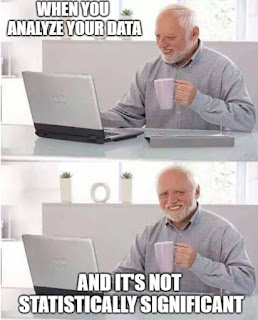So Many Figures
When we
first chose our journal articles a couple weeks ago I tried to be intentional about
picking one that would make a good presentation. I wanted one that I found
interesting, and one that would have enough engaging results to fill the full
10 minutes. It was those two criteria that led me to choose the “Directing
Cellular Information Flow via CRISPR Signal Conductors”. I found the premise of
engineering CRISPR constructs to act at ‘Boolean Logic Gates’ really intriguing,
but what I didn’t realize until somewhat later was just how extensive this
paper was. Not only did the authors design environment inducible CRISPR sgRNAs they
also created three or four variations of this system, tested its responsiveness
to a number of different conditions, created six different ‘logic’ gates, and
used them to kill cancer cells. In addition to the 6 figures in the paper,
there were 36 supplementary figures and 24 supplementary tables. Originally, I
was worried about selecting a paper without enough to talk about, but I ended
up with a paper that arguably had too much.
The problem that I encountered when preparing my
presentation became how to pare down these troves of data into a single 10-minute
message. I decided early on that the most interesting piece was the activatable
sgRNAs, and that the Boolean logic gates data was to elaborate for the 10
minutes I had allotted, especially if I wanted to walk through the entire
experimental process. These decisions left me with a focus on the cancer
killing experiments, but even with that small section of the paper it was a challenge
trimming down to a single coherent message. Despite the numerous supplementary
figures and confirmations that the researchers provided, I ended up selecting
only a core set of experiments that supported the central message.
In the end
though, I’m actually pretty happy with the story I ended up telling. By being
presented with so much information, it really forced me to think more deeply
about what was important to my overall message, and to understand the
connections between the data more deeply. Surprisingly, I found that I actually
really enjoyed the process of going through this paper carefully, and transforming
it into a presentation. If nothing else though, I think this was a great experience
in reading and understanding an actual paper, even if I only ended up talking
about 10% of it.

Comments
Post a Comment